-
Recent Posts
Archives
- October 2022
- August 2022
- May 2022
- March 2022
- January 2022
- December 2021
- September 2021
- July 2021
- June 2021
- May 2021
- April 2021
- February 2021
- January 2021
- November 2020
- October 2020
- September 2020
- June 2020
- April 2020
- March 2020
- February 2020
- January 2020
- December 2019
- November 2019
- October 2019
- September 2019
- June 2019
- March 2019
- February 2019
- January 2019
- December 2018
- November 2018
- October 2018
- August 2018
- July 2018
- June 2018
- May 2018
- April 2018
- March 2018
- February 2018
- January 2018
- December 2017
- November 2017
- October 2017
- September 2017
- August 2017
- July 2017
- June 2017
- May 2017
- April 2017
- March 2017
- February 2017
- January 2017
- December 2016
- November 2016
- August 2016
- July 2016
- June 2016
- May 2016
- April 2016
- March 2016
- February 2016
- January 2016
- December 2015
- November 2015
- October 2015
- September 2015
- August 2015
- July 2015
- June 2015
- May 2015
- April 2015
- March 2015
- December 2014
- June 2014
- May 2014
- April 2014
- November 2013
- September 2013
- August 2013
- July 2013
- June 2013
- May 2013
- March 2013
- January 2013
- November 2012
- October 2012
- July 2012
- December 2011
- November 2011
- October 2011
- September 2011
- August 2011
- July 2011
- June 2011
- May 2011
- April 2011
- March 2011
- February 2011
- January 2011
- December 2010
- November 2010
Categories
Meet the NorthStar VETS Team: Dominick Valenzano, DVM
Dominick Valenzano, DVM is a doctor in the Surgery service at NorthStar VETS. In this video, he talks about leaving engineering to get into veterinary medicine, the types of cases he sees, and what drew him to NorthStar VETS to start his career.
How Dr. Valenzano got into Veterinary Medicine
We caught up with Dr. Valenzano, who was checking on a patient. Dr. Valenzano is a doctor on the Surgery team at NorthStar VETS and he originally planned to be an engineer before finding his passion for veterinary medicine. “When I was an undergraduate, I was studying Engineering at the University of Maryland, and while I was there, i got a job at a veterinary clinic as an assistant. I ended up loving the job so much that I switched my major around and after that I ended up going to veterinary school at Cornell University. After graduating veterinary school, I did a one-year internship at the University of Pennsylvania and then following that, a three-year residency in Surgery at Cornell University.”
“I first heard about NorthStar VETS from another employee who works here. They spoke very highly of the hospital, that it was a very collaborative hospital with a lot of great resources. I interviewed a few months after that and then accepted the job several months after that.”
The Types of Cases Dr. Valenzano Sees
NorthStar VETS sees a wide variety of unique cases each week. “So far, a typical week has been balancing several appointments and cases with other emergencies that come up that are more urgent and need to be dealt with quickly. Those could be anything from orthopedic cases such as trauma (like fractures), to cruciate tears, and a wide variety of soft-tissue cases both emergent and elective.”
What Dr. Valenzano Loves about NorthStar VETS
NorthStar VETS has more than 45 doctors working in 15 different specialties, and all of them work together to provide world class care to their patients. “What I’ve really appreciated about NorthStar VETS is the tremendous amount of support and collaboration that you can find here. There are so many different specialties and highly-trained technicians that makes everything that you need to do much easier.”
Dr. Valenzano really enjoys working with clients and helping to keep pets healthy. “I think that they see all the hard work we do, and when you are able to have a lot of really great outcomes, it keeps you motivated to want to keep coming back in.”
Learn more about the Surgery service at NorthStar VETS.
Dominick Valenzano, DVM (practice limited to surgery)
 Dr. Valenzano grew up in central New Jersey and is excited to join the NorthStar VETS surgery team. Dr. Valenzano obtained his Bachelor of Science in Bioengineering from the University of Maryland in 2011. During his undergraduate studies, he worked as a veterinary technician which inspired him to go to veterinary school. He graduated from Cornell University?EUR(TM)s Veterinary School in 2015 and then completed a rotating internship at Ryan Veterinary Hospital at the University of Pennsylvania. After his internship, he completed his three-year residency program at Cornell University Hospital for Animals in 2019. His surgical interests include minimally invasive surgery, orthopedic surgery, and cardiothoracic surgery. He is trained in the tibial plateau leveling osteotomy (TPLO) for cranial cruciate ligament disease.
Dr. Valenzano grew up in central New Jersey and is excited to join the NorthStar VETS surgery team. Dr. Valenzano obtained his Bachelor of Science in Bioengineering from the University of Maryland in 2011. During his undergraduate studies, he worked as a veterinary technician which inspired him to go to veterinary school. He graduated from Cornell University?EUR(TM)s Veterinary School in 2015 and then completed a rotating internship at Ryan Veterinary Hospital at the University of Pennsylvania. After his internship, he completed his three-year residency program at Cornell University Hospital for Animals in 2019. His surgical interests include minimally invasive surgery, orthopedic surgery, and cardiothoracic surgery. He is trained in the tibial plateau leveling osteotomy (TPLO) for cranial cruciate ligament disease.
Posted in Pets, Veterinary Medicine
Tagged Dominick Valenzano DVM, NorthStar VETS, veterinary surgery
Leave a comment
Cool Case Maggie
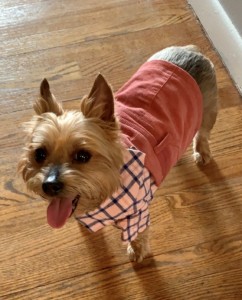 Maggie, a 10-year-old Yorkshire Terrier, presented to NorthStar VETS for acute respiratory distress and cyanosis (turning blue), noticed by the pet-sitter while the owners were returning home from vacation. She had a history of tracheal collapse, but before this episode, she had been doing pretty well. Upon arrival, she had a honking cough and was significantly dyspneic (trouble breathing). She was successfully stabilized by the Emergency team with oxygen therapy and sedation.
Maggie, a 10-year-old Yorkshire Terrier, presented to NorthStar VETS for acute respiratory distress and cyanosis (turning blue), noticed by the pet-sitter while the owners were returning home from vacation. She had a history of tracheal collapse, but before this episode, she had been doing pretty well. Upon arrival, she had a honking cough and was significantly dyspneic (trouble breathing). She was successfully stabilized by the Emergency team with oxygen therapy and sedation.
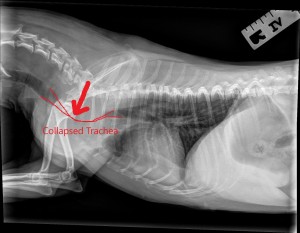 Chest X-rays revealed severe collapse of her cervical trachea (as seen in the image). We gave her a few days of attempted medical management; however, she continued to have very noisy breathing, coughing and episodes of cyanosis when taken out of the oxygen cage. Because of the severity of the collapse and her episode, it was elected to manage her condition with a tracheal stent placement.
Chest X-rays revealed severe collapse of her cervical trachea (as seen in the image). We gave her a few days of attempted medical management; however, she continued to have very noisy breathing, coughing and episodes of cyanosis when taken out of the oxygen cage. Because of the severity of the collapse and her episode, it was elected to manage her condition with a tracheal stent placement.
Tracheal collapse is a condition from cartilage weakness in the trachea that causes the normally open, “C-shaped” cartilage rings to collapse down partially or completely. When this happens, it causes a honking cough and does not allow air to normally pass through it. It is an irreversible and progressive condition common in small-breed dogs, especially Yorkies like Maggie.
It can be managed medically or surgically. Medical management involves cough suppressants, anti-histamines, intermittent steroids, keeping the dogs trim and using harnesses, not collars. In most cases, we can successfully manage their clinical signs and coughing with these treatment options. When the case is more severe, or if it causes life-threatening signs, as in Maggie’s case, we opt for a procedural intervention. This is done by placing a nitinol, meshwork stent inside the tracheal lumen to give it support and keep it open. It does not eliminate the cough completely, but usually improves it significantly and prevents the life-threatening respiratory episodes.
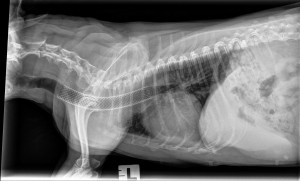 Understanding the risks of this respiratory procedure, Maggie’s owners decided to move forward with the stent placement. She was placed under general anesthesia and the size of the stent was chosen based on measurements taken via fluoroscopy. The endotracheal tube (tube used to delivery oxygen and anesthetic gas) was removed and the stent was deployed in her trachea covering the collapse area and keeping it nice and open (as seen in the image).
Understanding the risks of this respiratory procedure, Maggie’s owners decided to move forward with the stent placement. She was placed under general anesthesia and the size of the stent was chosen based on measurements taken via fluoroscopy. The endotracheal tube (tube used to delivery oxygen and anesthetic gas) was removed and the stent was deployed in her trachea covering the collapse area and keeping it nice and open (as seen in the image).
She recovered beautifully, and for the first time since we met her, she was able to breathe quietly and be with us outside of the oxygen cage. She was immediately happy, alert and wanting to eat! It was truly a night-and-day difference.
Maggie went home the next day breathing normally. Months later, Maggie is at home and doing extremely well. She coughs occasionally, which is expected for dogs with tracheal stents, but it is minimal and has not led to any further respiratory distress episodes. We love hearing how well she is doing at home and that she is enjoying time with her family!
Learn more about the Interventional Radiology service at NorthStar VETS.
Melanie Puchot, DVM, DACVIM
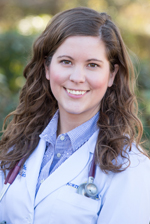 Dr. Melanie Puchot is a Texas native who received her veterinary degree from Texas A&M University College of Veterinary Medicine in 2013. After graduation, she completed a small animal rotating internship at Cornell University in Ithaca, NY. She then returned to Texas A&M University and completed a 3-year residency in small animal internal medicine in 2017. She has a special interest in endocrinology, nephrology and interventional endoscopy / radiology. Dr. Puchot is excited to join the team at NorthStar VETS.
Dr. Melanie Puchot is a Texas native who received her veterinary degree from Texas A&M University College of Veterinary Medicine in 2013. After graduation, she completed a small animal rotating internship at Cornell University in Ithaca, NY. She then returned to Texas A&M University and completed a 3-year residency in small animal internal medicine in 2017. She has a special interest in endocrinology, nephrology and interventional endoscopy / radiology. Dr. Puchot is excited to join the team at NorthStar VETS.
The information presented on this web site is not intended to take the place of your family veterinarian’s advice and is not intended to diagnose, treat, cure or prevent any disease. Discuss this information with your own veterinarian to determine what is right for your pet. All information is intended for your general knowledge only and is not a substitute for medical advice or treatment for specific medical conditions. We can not and do not give you medical advice via this blog. The information contained in this online site and emails is presented in summary form only and intended to provide broad understanding and knowledge. The information should not be considered complete and should not be used in place of a visit, call, consultation or advice of your veterinarian. We do not recommend the self-management of your pet’s health problems.
Meet the NorthStar VETS Team: Dylan Fry, DVM, DACVIM (Neurology)
Dylan Fry, DVM, DACVIM (Neurology) is a doctor in the Neurology service at NorthStar VETS. In this video, he talks about how his days on a dairy farm got him into veterinary medicine, the types of cases he sees, and what drew him to NorthStar VETS to start his career.
How Dr. Fry got into Veterinary Medicine
We caught up with Dr. Fry, who was checking on a patient. Dr. Fry is a Neurologist at NorthStar VETS and was first inspired to become a veterinarian from growing up on a dairy farm. “My Uncle is a veterinarian as well, so that was a big impact. It wasn’t until after I finished undergrad at Cornell University that I decided to go back to vet school later on. I went to Cornell for undergrad and then once I decided I wanted to go to vet school, I came back to Cornell and had a great experience there for all eight years. Since vet school, I narrowed my path toward Neurology. I’ve done a specialty internship, practiced emergency medicine along the way to broaden my experience, and then started a residency at Tufts University for four years there.”
After passing board certification, Dr. Fry came to join the team at NorthStar VETS. “I had heard about NorthStar VETS early on, even before starting my residency, so it was always on the radar as a great hospital. When it came time to pick a place that I wanted to practice, I definitely had it in consideration. The biggest things that drew me were the camaraderie among the doctors (everyone seems to get along really well here and it’s a great team), state-of-the-art facilities, and everyone practices really good medicine.”
The Types of Cases Dr. Fry Sees
As a Neurologist and Neurosurgeon at NorthStar VETS, Dr. Fry sees a wide variety of cases. “I primarily see patients that are dogs or cats, and any disease relating to the brain, spine or musculature. Sometimes, those are diseases that need medical management or surgery, and we do quite a bit of MRIs here, which is our main diagnostic tool to diagnose these diseases.”
What Dr. Fry Loves about NorthStar VETS
Dr. Fry is looking forward to helping you and your pets. “It’s been great so far. I like working with the people here. It’s been a very warm welcome and we all get along very well, and the clients and patients have been great, too. I’m looking forward to more time and more experience here.”
Learn more about the Neurology service at NorthStar VETS.
Dylan Fry, DVM, DACVIM (Neurology)
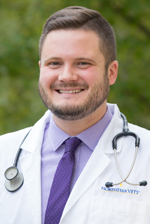 Dr. Dylan Fry received his veterinary degree from Cornell University College of Veterinary Medicine in 2013. After graduation, he completed a small animal rotating internship at Red Bank Veterinary Hospital and then worked as an emergency clinician at Massachusetts Veterinary Referral Hospital. He then pursued a 1-year specialty internship followed by a 3-year residency in neurology and neurosurgery at the Cummings School of Veterinary Medicine at Tufts University. Dr. Fry enjoys all aspects of veterinary neurology, particularly brain and spinal surgery, seizure management, and autoimmune inflammatory diseases.
Dr. Dylan Fry received his veterinary degree from Cornell University College of Veterinary Medicine in 2013. After graduation, he completed a small animal rotating internship at Red Bank Veterinary Hospital and then worked as an emergency clinician at Massachusetts Veterinary Referral Hospital. He then pursued a 1-year specialty internship followed by a 3-year residency in neurology and neurosurgery at the Cummings School of Veterinary Medicine at Tufts University. Dr. Fry enjoys all aspects of veterinary neurology, particularly brain and spinal surgery, seizure management, and autoimmune inflammatory diseases.
Posted in Pets, Veterinary Medicine
Tagged Dylan Fry DVM, neurology, NorthStar VETS, Veterinary Neurology
Leave a comment
Meet the NorthStar VETS Team: Chelsea Bogart, DVM
Chelsea Bogart, DVM is a doctor in the Emergency and Critical Care service at NorthStar VETS. In this video, she talks about how she got into veterinary medicine, the types of cases she sees, and the kind of pets she has at home.
How Animals Brought Dr. Bogart into Veterinary Medicine
We caught up with Dr. Bogart, who was checking on a patient. Dr. Bogart works with Emergency cases and grew up with a lot of pets around that inspired her to become a veterinarian. “I went to undergrad at UMass Amherst in western Massachusetts, and then I went all the way to California for veterinary school. I went to Western University of Health Sciences and that’s where I earned my doctorate. After that, I was living in Austin, Texas with my husband, who is a college professor. He got a job at Rowan University, which led us out here. I have a classmate who works at NorthStar VETS, and that’s how I found NorthStar VETS.” She went on to talk about the rescue pets she has at home. “Both of my dogs are L.A. street dogs I found when I was in veterinary school. I have one that’s an Australian Shepherd mix, and one that’s a Chihuahua/Dachshund, so he’s extra sassy. I also have two senior cats that I’ve had since I was a teenager.”
The Types of Cases Dr. Bogart Sees
Dr. Bogart works in Emergency and Critical Care, and sees a wide variety of cases each week. “We see a lot of trauma cases, we see a lot of vomiting and diarrhea, gastroenteritis, and things like that. We see puppies with dietary indiscretion getting into things they shouldn’t. Those are probably the most common things we see coming through Emergency every day. Pets do really well with supportive care. I think it’s really rewarding to see a pet that came in sick and by the end of the shift have it be bouncing back and showing significant improvement.”
Many pets come into the Emergency department in dire situations, and Dr. Bogart enjoys seeing the dramatic improvements in her patients. “I saw a Chihuahua puppy, and I’m a Chihuahua Mom, so they’re already my number one. It came in having had a lot of vomiting and diarrhea, it was very dehydrated. Actually, on presentation, was close to passing away, but we intervened very quickly. We started fluids, antibiotics, and pain medication. In the next eight hours when I left at the end of my shift, he was bouncing around and giving kisses. It was really sweet and rewarding to see him make that improvement.”
What Dr. Bogart Loves about NorthStar VETS
Dr. Bogart has only been at NorthStar VETS for a few months, and she looks forward to helping more pets and their families in the future. “I think it’s a really wonderful environment in which to work, which is one of the most important things. Plus, I think the quality of medicine is really high which is excellent!”
Learn more about the Emegency and Critical Care service at NorthStar VETS.
Chelsea Bogart, DVM
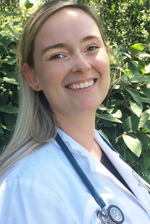 Dr. Bogart grew up in Deerfield, Massachusetts and earned her Bachelor of Science degree in Animal Science from the University of Massachusetts in 2012. Following graduation, she moved to California where she earned her Doctorate of Veterinary Medicine from Western University of Health Sciences. She completed a rotating internship in San Diego, CA and then moved to Austin Texas, where she worked full time as an emergency veterinarian.
Dr. Bogart grew up in Deerfield, Massachusetts and earned her Bachelor of Science degree in Animal Science from the University of Massachusetts in 2012. Following graduation, she moved to California where she earned her Doctorate of Veterinary Medicine from Western University of Health Sciences. She completed a rotating internship in San Diego, CA and then moved to Austin Texas, where she worked full time as an emergency veterinarian.
Dr. Bogart recently relocated from Texas to New Jersey and joined the emergency team at NorthStar VETS. Her clinical interests include toxicology, neurology, and wound management. In her free time she enjoys hiking, cooking, watching sports, and spending time with her husband as well as their two rescue dogs and two senior cats.
Posted in Pets, Veterinary Medicine
Tagged Chelsea Bogart DVM, NorthStar VETS, Veterinary Emergency
1 Comment
Cool Case Rosey
Rosey is a happy and playful 10-month-old Bichon mix that was recently adopted by her family as an emotional support dog. She was a healthy puppy with no previous medical history.
Rosey was brought in to see Dr. Nancy Vail-Archer, Emergency clinician and Medical Director of the NorthStar VETS hospital in Maple Shade, for a sudden onset of vomiting followed by collapse. Her family reported that she was perfectly normal earlier that morning. They were very concerned and unable to think of what could have happened to make Rosey so ill.
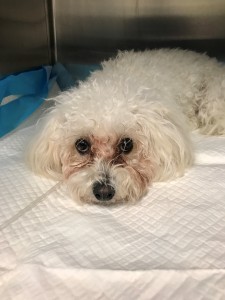 On presentation, she was stuporous (poorly responsive) with miotic pupils (constricted pupils). Rosey was hypersalivating (drooling excessively), tetraparetic (unable to use all four of her limbs), she was vocalizing and highly sensitive to any stimulation. Further examination revealed that Rosey was unable to swallow due to an impaired gag reflex. Given her young age, rapid onset of signs and clinical presentation, a toxin exposure was high on the list of differential diagnoses.
On presentation, she was stuporous (poorly responsive) with miotic pupils (constricted pupils). Rosey was hypersalivating (drooling excessively), tetraparetic (unable to use all four of her limbs), she was vocalizing and highly sensitive to any stimulation. Further examination revealed that Rosey was unable to swallow due to an impaired gag reflex. Given her young age, rapid onset of signs and clinical presentation, a toxin exposure was high on the list of differential diagnoses.
Many of her clinical signs were consistent with a baclofen toxicosis. Baclofen is a common medication that acts on the central nervous system to provide muscle relaxation. The drug rapidly crosses the blood-brain barrier (travels from the blood stream into the brain) resulting in suppression of the central nervous system. Further discussions with her family revealed that baclofen was in the home and could not be ruled out as a potential cause. The treatment for a baclofen toxicosis can be intensive, but with aggressive supportive care, the prognosis is often good for recovery. Severe muscle relaxation can result in an inability to breathe, and may necessitate intubation and mechanical ventilation.
Rosey was treated with IV fluids, antinausea medications and medications to help reduce the toxic effects of the baclofen. Cotton balls were placed in her ears to help reduce stimulation. A particularly important treatment was the use of Intralipid emulsion (ILE). ILE will help to capture the toxicant and carry it to organs that can detoxify and/or excrete the toxicant. Additional nursing staff was called in to provide one-on-one supportive care for Rosey. Over the next 24 hours Rosey gradually became more responsive and fully recovered by her 3rd day in the hospital. We are happy to know that Rosey is at home and is back to being a playful puppy!
Learn more about the Emergency and Critical Care service at NorthStar VETS.
Nancy Vail-Archer, DVM – Medical Director, Maple Shade
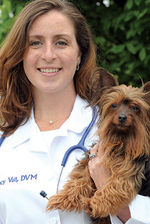 Dr. Vail-Archer returned to her hometown of Bordentown, New Jersey along with her two dogs, Ricky and Saba, when she joined NorthStar VETS in 2007. She completed her undergraduate studies at Rutgers University where she earned a degree in biological sciences, and her interest in research and medicine led her to Princeton University where she worked as a research assistant. She completed her veterinary studies at Ross University School of Veterinary Medicine, with a year of clinical training at the University of Missouri College of Veterinary Medicine. She completed a 13-month rotating internship at Fifth Avenue Veterinary Specialists in New York City and has a special interest in emergency and critical care medicine. Outside of veterinary medicine, Dr. Vail-Archer enjoys running, skiing and scuba diving.
Dr. Vail-Archer returned to her hometown of Bordentown, New Jersey along with her two dogs, Ricky and Saba, when she joined NorthStar VETS in 2007. She completed her undergraduate studies at Rutgers University where she earned a degree in biological sciences, and her interest in research and medicine led her to Princeton University where she worked as a research assistant. She completed her veterinary studies at Ross University School of Veterinary Medicine, with a year of clinical training at the University of Missouri College of Veterinary Medicine. She completed a 13-month rotating internship at Fifth Avenue Veterinary Specialists in New York City and has a special interest in emergency and critical care medicine. Outside of veterinary medicine, Dr. Vail-Archer enjoys running, skiing and scuba diving.
The information presented on this web site is not intended to take the place of your family veterinarian’s advice and is not intended to diagnose, treat, cure or prevent any disease. Discuss this information with your own veterinarian to determine what is right for your pet. All information is intended for your general knowledge only and is not a substitute for medical advice or treatment for specific medical conditions. We can not and do not give you medical advice via this blog. The information contained in this online site and emails is presented in summary form only and intended to provide broad understanding and knowledge. The information should not be considered complete and should not be used in place of a visit, call, consultation or advice of your veterinarian. We do not recommend the self-management of your pet’s health problems.
Posted in Pets, Veterinary Medicine
Tagged baclofen, itralipid emulsion, Nancy Vail DVM, NorthStar VETS, toxic, Veterinary Emergency
Leave a comment
Cool Case Pearl
Pearl, a 2 year old English Bulldog, presented to NorthStar VETS with a chronic history of diarrhea and weight loss. In fact, she continued to lose weight despite many treatment options. To reach a definitive diagnosis, Pearl had biopsies of her gastrointestinal tract. Biopsies were consistent with a condition called inflammatory bowel disease (IBD).
Inflammatory bowel disease is a chronic inflammatory condition of the gastrointestinal tract. Although the etiology in many cases of IBD is unknown, there are several factors which may contribute to this condition including parasites, bacterial disease, immune mediated response, and food hypersensitivity, among others. Regardless of the cause, IBD can many times be controlled with more traditional treatments. These treatments include treating the bacterial or parasitic disease, specific diets, and steroids to calm the immune system.
Unfortunately, in Pearl’s case, she did not respond to the more traditional treatments. Pearl continued to lose weight and the diarrhea was persistent. At this point, Dr. Wylie and the team at NorthStar VETS looked to more nontraditional methods. This nontraditional method included a fecal transplant.A fecal transplant involves taking a donor’s stool (from a healthy dog), once they have passed the necessary screening tests, and making it into a slurry. The slurry is then transplanted into the patient’s gastrointestinal tract either across the scope via endoscopy or as a retention enema. This has been extensively used as a treatment option in human medicine, but it has been a fairly newer concept in veterinary medicine. This type of procedure can be used to help patients with inflammatory bowel disease or bacterial imbalance (dysbiosis).
In Pearl’s case, the transplant was performed via retention enema, and the donor was Dr. Wylie’s own dog, Arya! The transplant seemed to work very well. In fact, Pearl’s stool was normal that night. She did have a week where she had some diarrhea, but ever since, Pearl’s stool has been completely normal!It is important to note that even though results can be seen as quickly as 24-48 hours, some patients can take a little bit longer to respond. Others may not respond at all. Fecal transplants can be used as needed. Luckily, Pearl has only needed one transplant and has been doing great since.
Learn more about the Internal Medicine service at NorthStar VETS.
Stacie Wylie, DVM, DACVIM
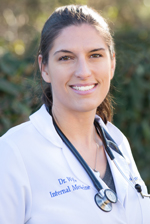 Dr. Stacey Wylie is a Pennsylvania native who received her undergraduate degree from Millersville University in 2009. She earned her veterinary degree from Michigan State University College of Veterinary Medicine in 2013. After graduation, she completed a small animal rotating internship at Oradell Animal Hospital in Paramus, NJ. She then returned to Michigan State University and completed a 3-year residency in small animal internal medicine in 2017, receiving Resident of the Year in both 2016 and 2017. Dr. Wylie is excited to be part of the NorthStar VETS team. She loves all things medicine, but her special interests include renal, hepatobiliary, gastrointestinal, and respiratory diseases as well as endoscopy and feline medicine.
Dr. Stacey Wylie is a Pennsylvania native who received her undergraduate degree from Millersville University in 2009. She earned her veterinary degree from Michigan State University College of Veterinary Medicine in 2013. After graduation, she completed a small animal rotating internship at Oradell Animal Hospital in Paramus, NJ. She then returned to Michigan State University and completed a 3-year residency in small animal internal medicine in 2017, receiving Resident of the Year in both 2016 and 2017. Dr. Wylie is excited to be part of the NorthStar VETS team. She loves all things medicine, but her special interests include renal, hepatobiliary, gastrointestinal, and respiratory diseases as well as endoscopy and feline medicine.
She currently resides with her husband, their 3 cats (Aeris, Yuffie, and Leon) and adorable pittie mix (Arya). Outside of work, she enjoys spending quality time with her family and friends, playing ice hockey and volleyball, reading, and playing video games. She is also a passionate MSU Spartan and Philadelphia Flyers fan.
Posted in Pets, Veterinary Medicine
Tagged fecal transplant, IBD, inflammatory bowel disease, NorthStar VETS, Stacie Wylie DVM
Leave a comment
Harmful Algal Blooms Persist in NJ
On August 20, NorthStar VETS posted a warning to pet parents about toxic algal blooms in NJ waters. This update is to inform pet parents that of the 21 bodies of water affected by harmful algal blooms (HABs) in July and August, 15 continue to be affected in September.
To err on the side of caution, please keep pets away from water that is green, scummy or smells bad. Toxin-producing cyanobacteria are not just dangerous for dogs, they can be fatal! We urge all pet parents to avoid exposure to bodies of water with algal blooms.
For the latest news story, visit NJ.com.
For more information on these harmful blue green algal blooms, visit EPA.gov.
Posted in Pets, Veterinary Medicine
Leave a comment
Cool Case Spud
Spud was rescued in North Carolina by Patti’s son while he was in school. After school, Spud came back to New Jersey where he joined Patti’s family which included another dog, Sinatra. The two dogs bonded and because of their relationship, Spud stayed with Patti when her son moved away. Spud has been a member of the family for the past five and a half years.
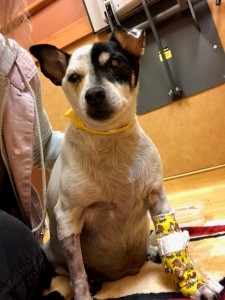 Two years ago, Spud was diagnosed with diabetes mellitus and has been receiving care ever since. Recently, Spud had to come in to NorthStar VETS to be monitored, and his experience was made much better this time with a new device. Spud has a fair amount of fear and anxiety when visiting the veterinarian, and having to get repeatedly poked to measure his blood sugar only made matters worse. This time, Drs. Kimberly Hammer and Stacey Wylie of the Internal Medicine team at NorthStar VETS placed a continuous blood glucose monitoring device on Spud. This new device, once in place, can be read with a hand-held scanner giving the NorthStar VETS doctors the information they need in helping Spud manage his condition, without ever having to draw blood from him. As a result, Spud was much calmer and less stressed during his stay.
Two years ago, Spud was diagnosed with diabetes mellitus and has been receiving care ever since. Recently, Spud had to come in to NorthStar VETS to be monitored, and his experience was made much better this time with a new device. Spud has a fair amount of fear and anxiety when visiting the veterinarian, and having to get repeatedly poked to measure his blood sugar only made matters worse. This time, Drs. Kimberly Hammer and Stacey Wylie of the Internal Medicine team at NorthStar VETS placed a continuous blood glucose monitoring device on Spud. This new device, once in place, can be read with a hand-held scanner giving the NorthStar VETS doctors the information they need in helping Spud manage his condition, without ever having to draw blood from him. As a result, Spud was much calmer and less stressed during his stay.
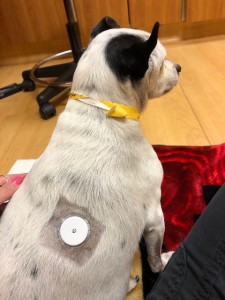 “The team at NorthStar VETS gave Spud a great experience as always and I know he received exceptional care,” said Patti, “He was so sick going in, but everyone was so sweet with him. They made accommodations for him so he was comfortable.” Today, Spud is at home enjoying his normal life. “He still has cataracts from his diabetes mellitus, but he navigates the house and still enjoys going for walks,” added Patti. “I take all three of my dogs to NorthStar VETS. Their staff is top of the line!”
“The team at NorthStar VETS gave Spud a great experience as always and I know he received exceptional care,” said Patti, “He was so sick going in, but everyone was so sweet with him. They made accommodations for him so he was comfortable.” Today, Spud is at home enjoying his normal life. “He still has cataracts from his diabetes mellitus, but he navigates the house and still enjoys going for walks,” added Patti. “I take all three of my dogs to NorthStar VETS. Their staff is top of the line!”
Spud didn’t need to be monitored at home, but if he did, the device could remain in place allowing both the doctors and the pet parents to get the information they need from Spud while he was at home.
Learn more about the Internal Medicine service at NorthStar VETS.
 Kimberly Hammer, DVM, DACVIM
Kimberly Hammer, DVM, DACVIM
Dr. Hammer received her veterinary degree from the University of Pennsylvania School of Veterinary Medicine in 2000. She spent a year at Mississippi State University College of Veterinary Medicine for a small animal internship and returned to the University of Pennsylvania for a two-year residency in small animal internal medicine. She earned board certification from the American College of Veterinary Internal Medicine in 2004. She has a special interest in interventional radiology/endoscopy and minimally invasive procedures. Her other interests include endocrinology, gastroenterology and hematology. She currently serves as the medical adviser for the NorthStar VETS blood bank. She joined the NorthStar VETS team in September 2007.
Outside of work she enjoys hiking, mountain biking, going to music concerts and reading.
 Stacey Wylie, DVM, DACVIM
Stacey Wylie, DVM, DACVIM
Dr. Stacey Wylie is a Pennsylvania native who received her undergraduate degree from Millersville University in 2009. She earned her veterinary degree from Michigan State University College of Veterinary Medicine in 2013. After graduation, she completed a small animal rotating internship at Oradell Animal Hospital in Paramus, NJ. She then returned to Michigan State University and completed a 3-year residency in small animal internal medicine in 2017, receiving Resident of the Year in both 2016 and 2017. Dr. Wylie is excited to be part of the NorthStar VETS team. She loves all things medicine, but her special interests include renal, hepatobiliary, gastrointestinal, and respiratory diseases as well as endoscopy and feline medicine.
She currently resides with her husband, their 3 cats (Aeris, Yuffie, and Leon) and adorable pittie mix (Arya). Outside of work, she enjoys spending quality time with her family and friends, playing ice hockey and volleyball, reading, and playing video games. She is also a passionate MSU Spartan and Philadelphia Flyers fan.
Posted in Pets, Veterinary Medicine
1 Comment
Meet the NorthStar VETS team Benjamin Donati VMD
Benjamin Donati, VMD is a doctor in the Emergency and Critical Care service at NorthStar VETS. In this video, he talks about his path into veterinary medicine, the types of cases he likes to treat, and why growing up in this area is an asset to the way he practices.
Dr. Donati’s Path to Veterinary Medicine
We caught up with Dr. Donati, who was checking on a patient. Dr. Donati works with Emergency cases and he originally planned to go to law school before talking to a friend about veterinary school. “The older brother of one of my classmates was in veterinary school at the time and when he came to visit my friend in college, he was talking about his school experience. It sounded interesting, so I did some shadowing at local general practices, and then I went to a couple of veterinary schools to talk to their admissions counselors, sat in on classes and labs, and then decided that this is what I wanted to go for after graduation.”
“I went to the University of Maryland for undergrad, and then prior to veterinary school, I had to take a lot of prerequisite classes, so I did those at various universities in Philadelphia and Washington D.C. and then went to the University of Pennsylvania for my four years of veterinary school. After I graduated from UPenn, I did a rotating internship in Internal Medicine and Surgery at a referral hospital in Brooklyn called Veterinary Emergency and Referral Group (VERG). At the end of my year there, I was looking for a great place hospital-wise and teamwork-wise and I loved NorthStar VETS. I had only heard good things about the hospital itself, and the clinicians and staff here.”
The Types of Cases Dr. Donati Likes to Treat
The Emergency and Critical Care team at NorthStar VETS must deal with a wide variety of cases. “Some of the more interesting cases I see are the ones that I don’t actually manage. There are poly-trauma cases that end up seeing Surgery for multiple fracture repairs, and then there are these longer protracted Internal Medicine cases which take some time to figure out exactly what’s been causing issues for months or years in a certain patient. On an emergent basis, I like doing laceration repairs. When something happens like a dog fight and there are bite wounds, something that seems traumatic at first, but can be easily remedied in-hospital, and we can send a dog or a cat back home to be with their family where they ideally spend most of their time, that is pretty rewarding. And cases where I’m able to distill a lot of confusing information into a compact discussion or delivery to the client is pretty rewarding to me as well. It’s hard enough to know what’s going on with our own bodies and health, but when we live with a creature that we love and all of a sudden they look way different than they did before, it can be really traumatic to see at home. These are things like first-time seizure cases, respiratory distress, and things where it’s hard to know what’s going on immediately, but within a couple hours of diagnostics, we’re able to give the owners an answer, come up with a treatment plan, come up with a prognosis, and set them up for what to expect going forward.”
Why Growing up Locally is an Asset
Dr. Donati grew up in Princeton and he recently treated a runaway cat from his hometown. “The cat was a diabetic and basically went into a diabetic crisis and had to be hospitalized for it. Having that discussion and for me, realizing what street the client was from, and that it was right around the corner from where we both went to school, really allowed us to make a connection. That helps build rapport between the two of us and it’s easier to come from a joint level of understanding and that we’re on the same team.”
What Dr. Donati Loves about NorthStar VETS
Dr. Donati is looking forward to helping clients and their pets. “I really like the way the clinicians all work together as a team. Client communication is at the forefront of what NorthStar VETS cares about and making sure that pet families are in the loop with what’s going on with their pets, and that the family veterinarian is involved and that we’re all part of the team effort toward great healthcare for our companion animals.”
Learn more about the Emegency and Critical Care service at NorthStar VETS.
Benjamin Donati, VMD
 Dr. Donati came to NorthStar VETS after completing a rotating internship in medicine and surgery in Brooklyn, NY. He received his undergraduate degree from the University of Maryland (GO TERPS!) and his doctorate in veterinary medicine at the University of Pennsylvania, where he discovered his passion for emergency medicine. Ben is a Princeton native and is glad to be back near family in his hometown. He spends his free time riding his bike, walking his goofy Newfoundland, Wellington, and trying to play as much golf as he can.
Dr. Donati came to NorthStar VETS after completing a rotating internship in medicine and surgery in Brooklyn, NY. He received his undergraduate degree from the University of Maryland (GO TERPS!) and his doctorate in veterinary medicine at the University of Pennsylvania, where he discovered his passion for emergency medicine. Ben is a Princeton native and is glad to be back near family in his hometown. He spends his free time riding his bike, walking his goofy Newfoundland, Wellington, and trying to play as much golf as he can.
Posted in Pets, Veterinary Medicine
Tagged Benjamin Donati VMD, NorthStar VETS, Veterinary Emergency
1 Comment





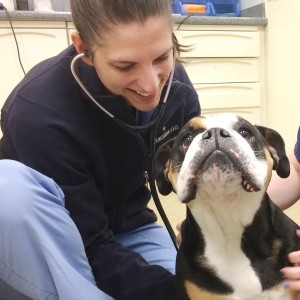
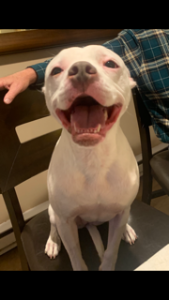
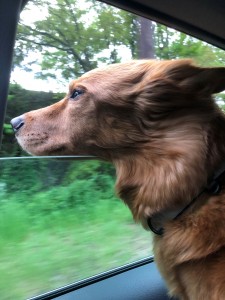
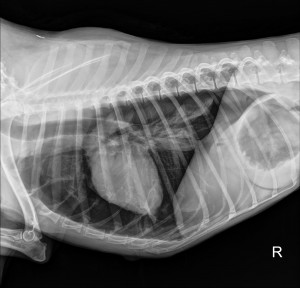
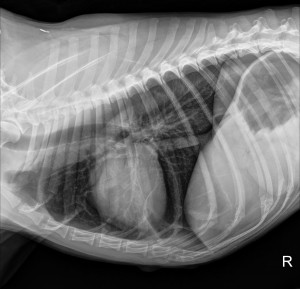
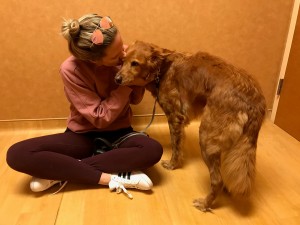
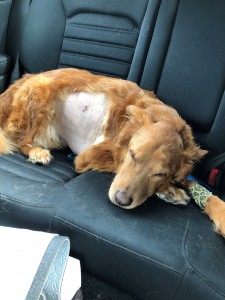
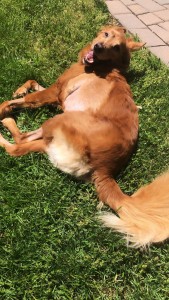
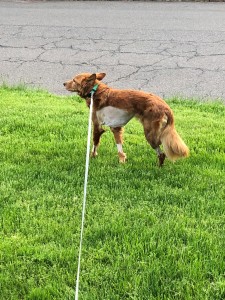
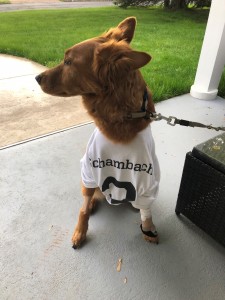
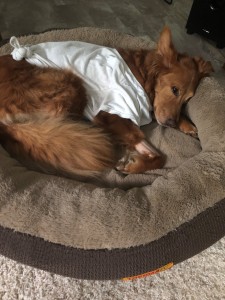
 Barri Sarowitz, VMD, DACVS
Barri Sarowitz, VMD, DACVS